Designing planets with machine learning
V&A Museum
The V&A Museum in London commissioned Tellart to create an installation for The Future Starts Here, a major exhibition exploring the implications of rapidly evolving technology on our world. Tellart's Terraform Table is a machine-intelligent sand table that invites visitors to shape landscapes and seascapes with their hands. It playfully explores the notion of remodeling the Earth's oceans, coastlines and mountains in response to climate change—or even for terraforming other planets.
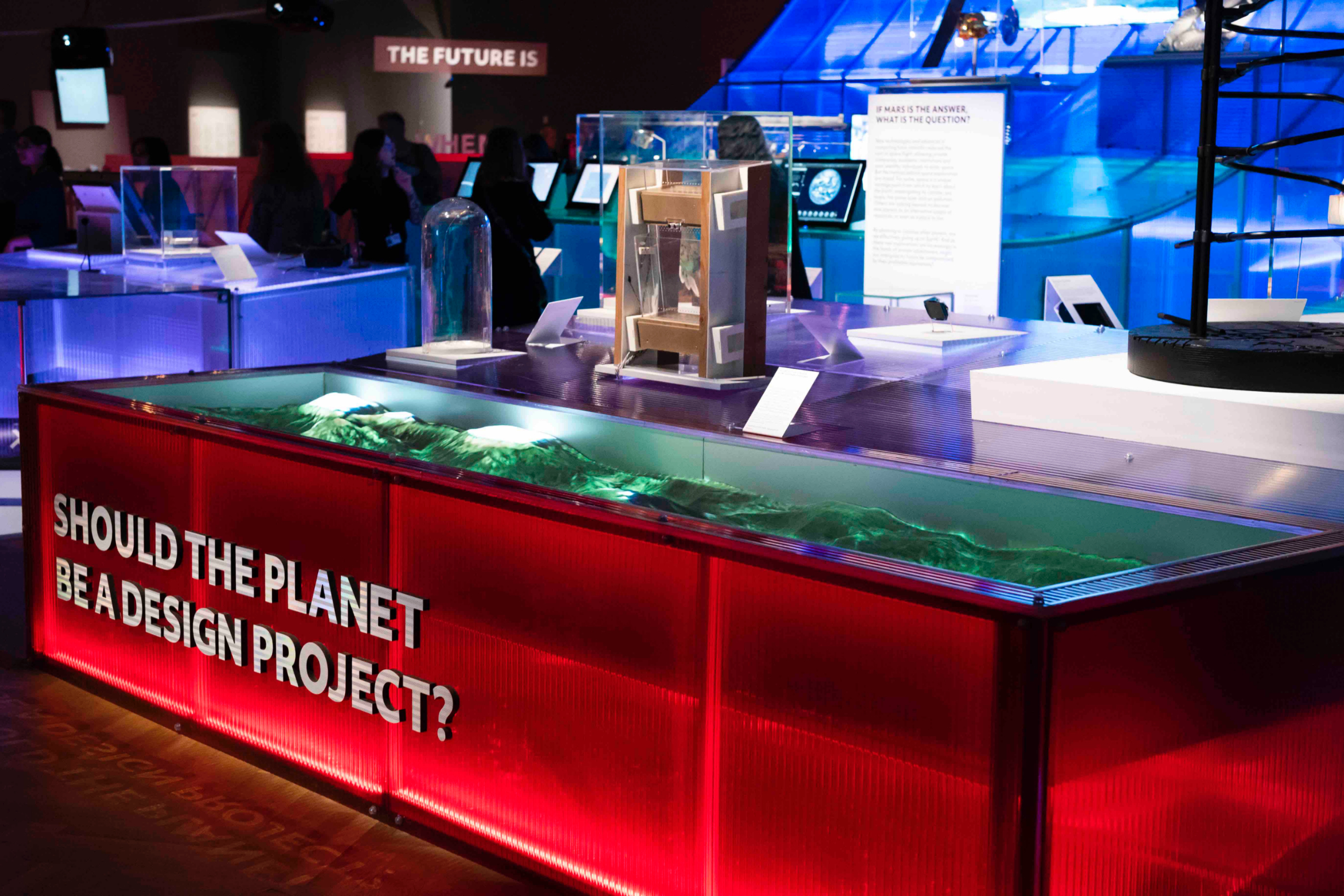
Commissioned for the Planetary section of the exhibition, this speculative project addresses the ethical and environmental question, “Should we shape the Earth and other planets for human use?” As we contemplate missions to Mars, the Terraform Table poses the ethical question of whether humans have the right to colonize space and its pristine celestial bodies.
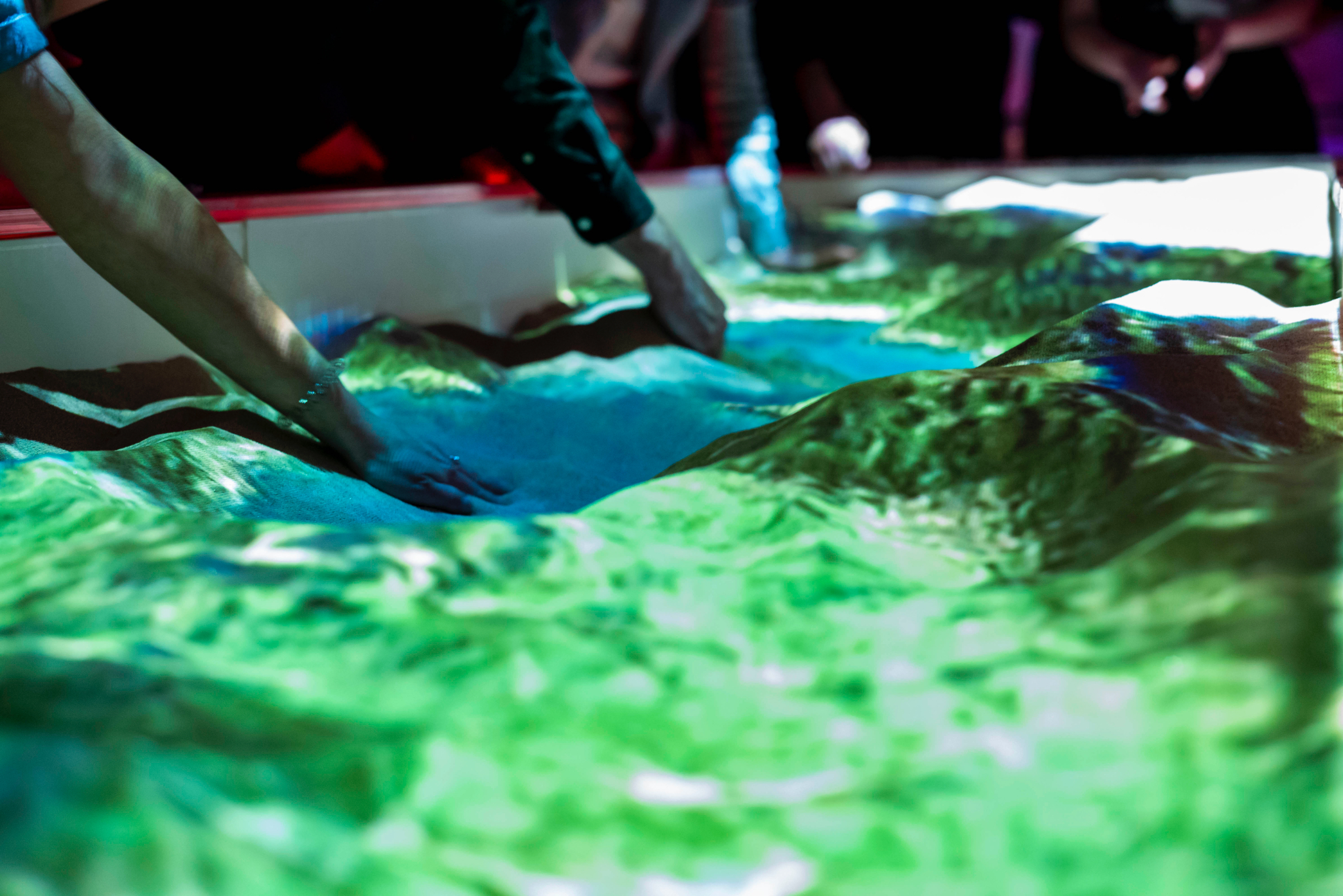
As visitors form hills and valleys in the sand, a machine learning algorithm reads the relative height of the sand and generates artificially composited rivers, lakes, forests and snowy peaks. These are projected onto the sand in real time, giving the impression of a photorealistic 3D landscape that responds to the visitor's touch. The projected imagery of land and water is derived from thousands of satellite images of Earth that the algorithm was trained to correlate with altitude data.
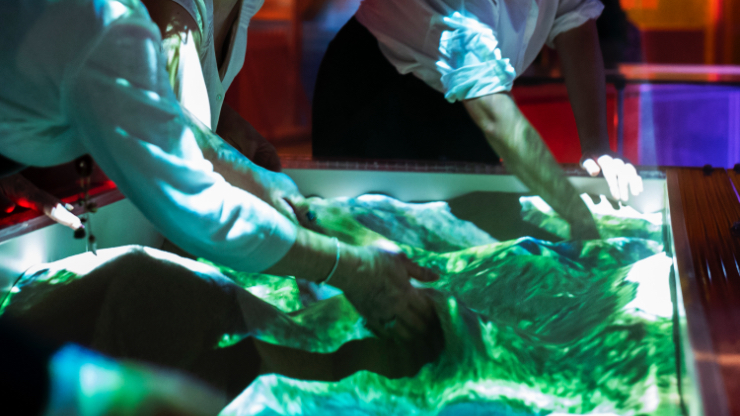
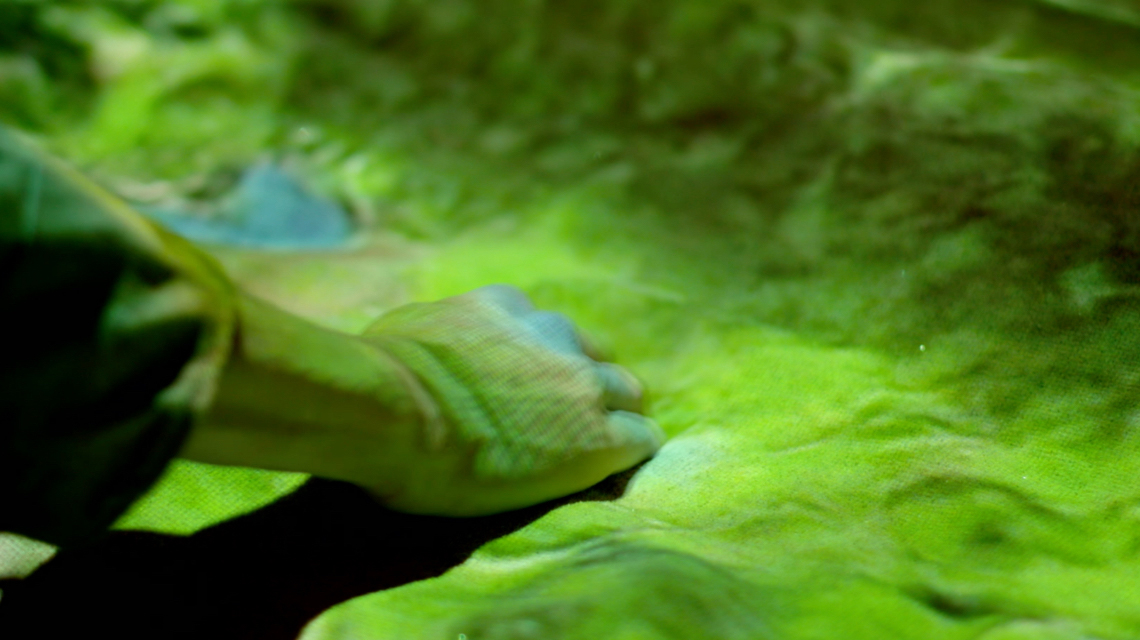
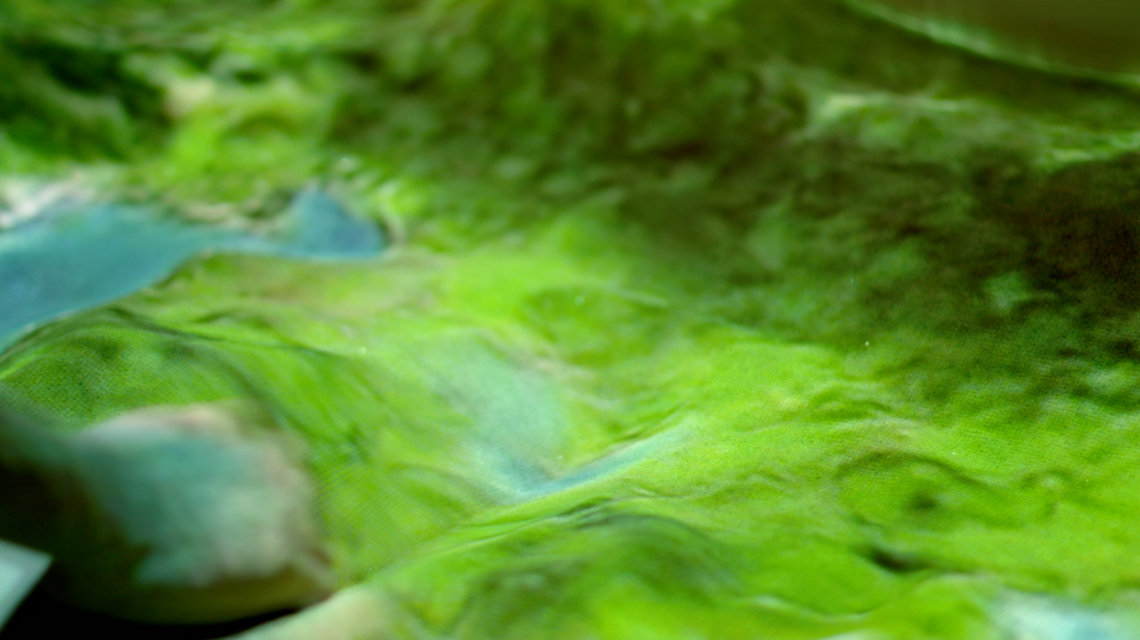
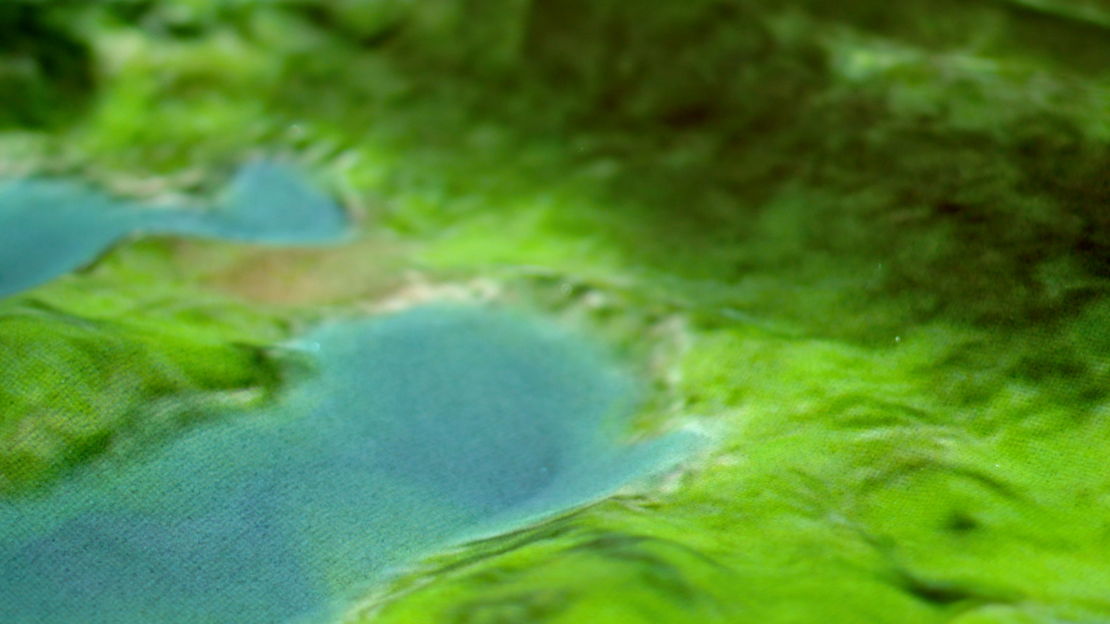
While the resulting landscapes appear continuous and real, they are actually created through the intelligence of a predictive model. A single artificial coastline could contain qualities extracted from hundreds of locations distinct as California, the Persian Gulf and the Japanese Archipelago—a synthesis of “Earthness” intended to spark a new and emotional connection with our planet.
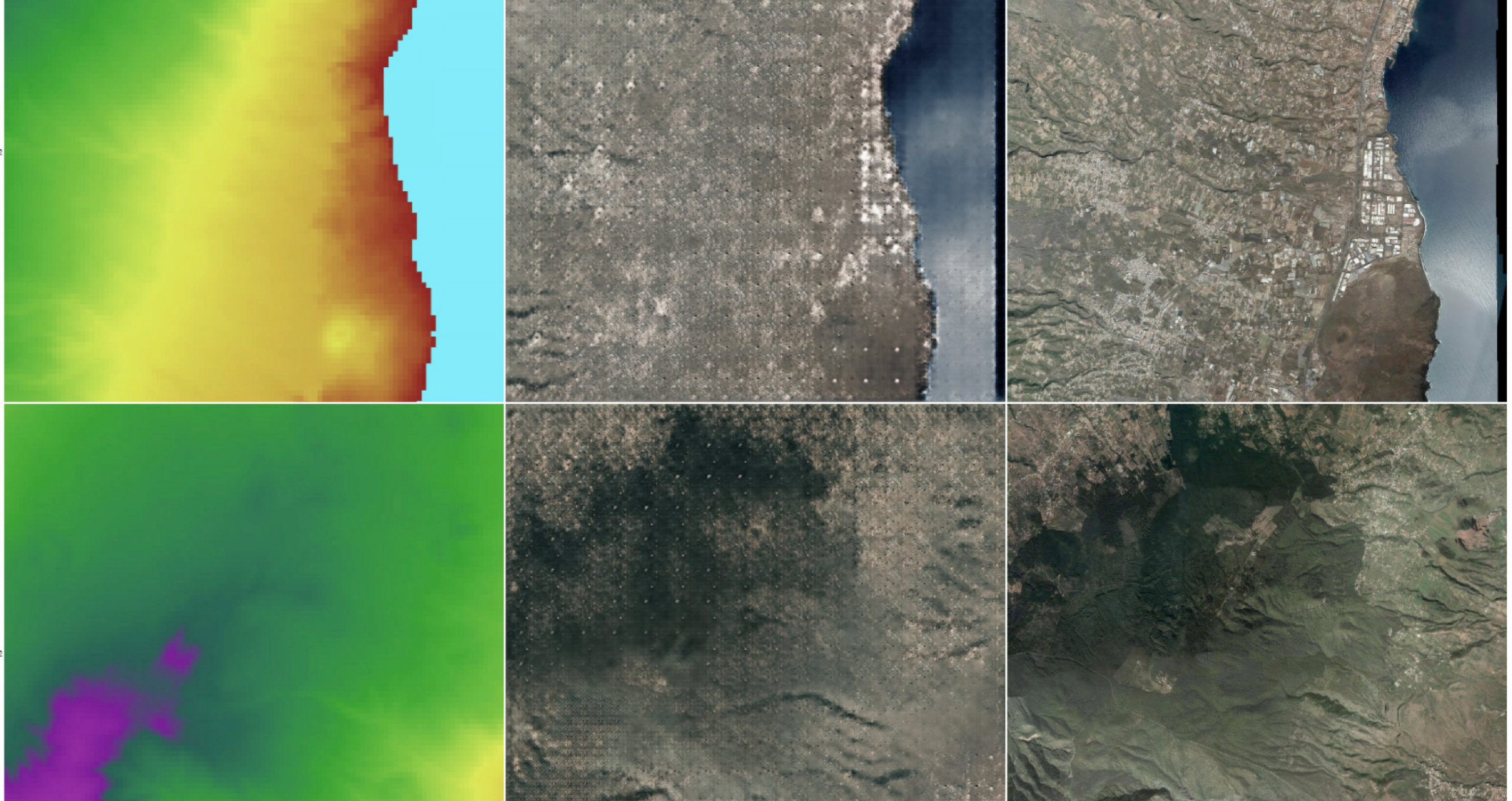
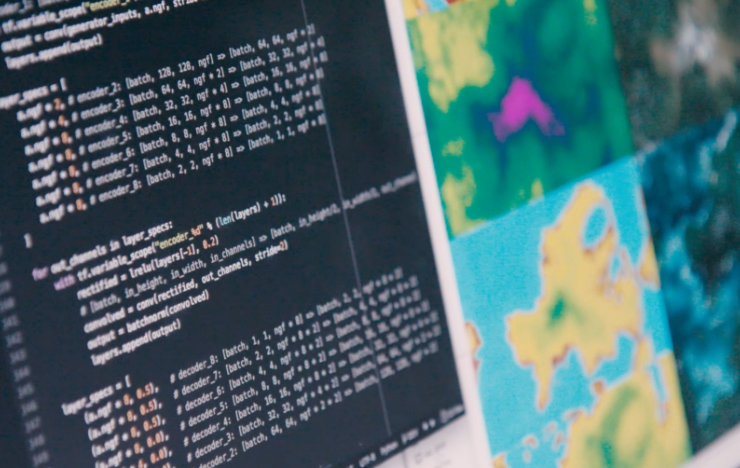
Tellart trained a machine learning algorithm on thousands of real satellite Earth images and corresponding elevation data. Over time, the algorithm “learned” to correlate the height of different landforms (image on left) with their appearance from orbit (right), in order to generate an artificial satellite image (middle).
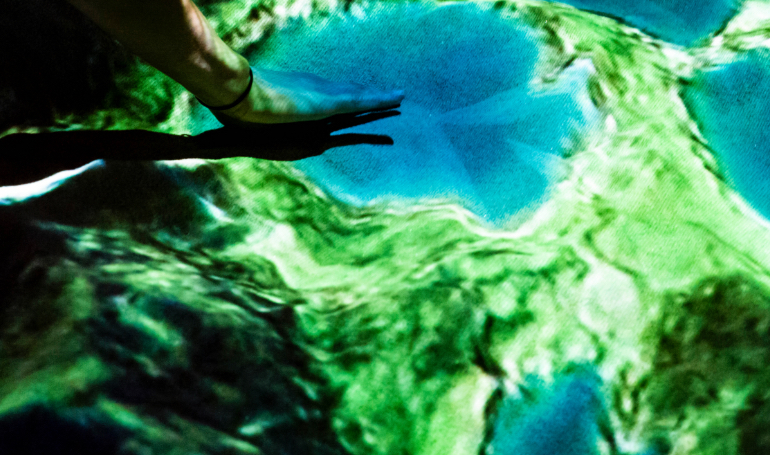
The Terraform Table builds on a long-running series of design experiments by Tellart combining technology and sand to create novel educational experiences for people of all ages. As with the Chrome Web Lab project, Tellart plans to share the code for the Terraform project with the Open Source community in the near future.
“Thank you so very much for believing in the project and delivering such an incredible central feature. Your exhibit was so wonderful, and unique and brilliant. Like nothing else we could have shown! My absolute favourite moments were watching the hundreds of kids interacting with the exhibits – especially yours. It is exactly what the Duke of Richmond asked for in his brief to me — to inspire the next generation. And that is exactly what you did.”
Lucy Johnston, Executive Curator of FUTURE LAB, Goodwood Festival of Speed
Project Data
Highlights:
• Featured at the Future Lab at the Goodwood Festival of Speed, by special request of the Duke of Richmond
• About to go on a 4-year world tour of major museums, as part of the V&A's Future Starts Here Exhibition
Selected Press:
Project team:
Tellart was responsible for concept, design, technology and installation. The software is based on the open source application Magic Sand, which in turn is heavily based upon the UC Davis original. Tellart significantly modified the code for this project with the help of open-source contributions by Memo Akten and Gene Kogan.
Sign up for our newletter